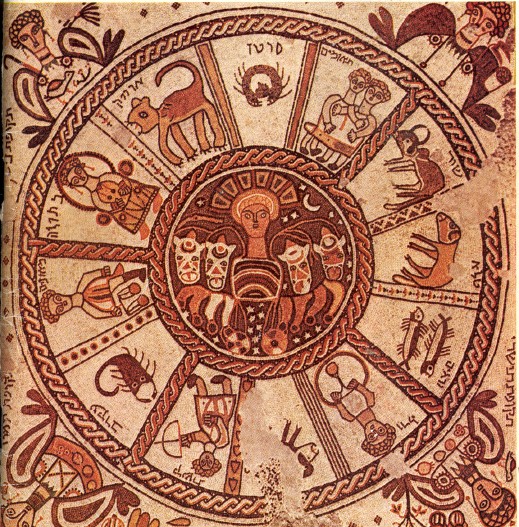
Beit Alfa mosaic floor, four seasons of the year
Every year when we approach mid-end September known as equinox, when the hours of the light equal the hours of darkness, we celebrate the the beginning of the the new Hebrew year. This happens also when a new moon month is born in the month of Tish-rei תשרי.
One might ask, why celebrate when the hours of the day are getting shorter, why celebrate when everyone goes back to kindergarten, schools universities? Is it such a happy occasion to return from summer vacation, from the shores and holiday huts – only to be greeted by yellow autumn leaves, early deep red wine sunsets, and grey cloudy skies?
At the root of Hebrew culture lies a unique approach to the hidden aspect of life. And if we follow this aspect, we can see its deep connections unfold.
The seasons of the years are four, each season represent one element. Summer stands for the fire element, winter stands for the water element, spring stands for the air element, and autumn stands for the earth element.
As the old story goes, man was created from the earth, thus every year we celebrate the birthday of the world, and the birth of man, who’s born from the earth, in the autumn season, whose element is earth. Just like we can’t see beneath the surface of the earth, the whole creation is hidden from man, this why during the course of history we have a chain of discoveries.
In the beginning of the Hebrew new year, when everything is concealed (including the moon, because when a new moon month starts, the moon is completely covered, and we have only darkness) we celebrate the creation of the world, the creation of man.
During the next 12 months, the human being discovers his hidden potential, which will come into action through the other three elements, water, wind and fire. Since everything is coming from the earth and everything returns to the earth, we celebrate the beginning of the new year in the autumn season whose element is earth (a place where all the potential is existing) and over the course of the year (and its holidays which mark the progression of inner discovery) this hidden potential manifests itself through the other elements (or seasons) which are water, wind, and fire.
Shana Tova שנה טובה Good year.
